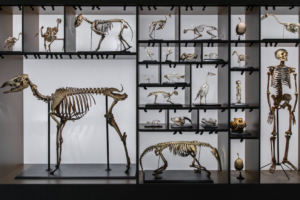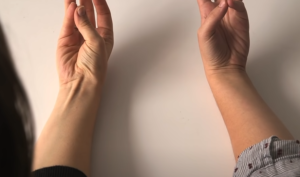Touch Your Pinky to Your Thumb – The Hidden Meaning Behind That Raised Tendon
Evolution is a Fascinating Process
Evolution is an amazing and mysterious process. It’s incredible to think that all mammals, including humans, are connected in some way. But how do we find evidence of this connection? Proof of evolution can be seen in many places, including the way humans evolved from early apes to Neanderthals and finally into modern humans.
A surprising place to observe evidence of evolution is our own bodies!
Many features of our bodies, both inside and outside, are reminders of traits passed down from our ancestors. These traits were once useful for survival but don’t serve much purpose anymore. For example, people no longer live as nomads or hunt for food daily, yet we still have these leftover traits from our past.

Goosebumps: A Link to Our Mammalian Ancestors
Have you ever wondered why you get goosebumps? It’s not random. For our mammalian ancestors, goosebumps were a way to stay warm. When they felt cold, tiny muscles in their skin caused their hair to stand up, trapping heat and creating warmth.
This reaction doesn’t do much for modern humans except remind us to wear a jacket. But you can still see it in animals. For instance, birds puff up their feathers on cold days to stay warm. If you’ve ever seen a pigeon fluff up in winter, it’s using the same instinct that gave us goosebumps.
This response wasn’t just for warmth. When animals felt scared, their fur would stand up to make them look bigger and scarier to predators. For example, when you startle a cat, its fur puffs up as a defense mechanism.

A Tendon That Links Us to the Past
One of the best pieces of evidence for evolution is found in our arms. Some people have a tendon that links to an ancient muscle called the palmaris longus. This muscle helped early primates, like lemurs and monkeys, climb trees by moving easily from branch to branch.
Humans and ground-dwelling apes like gorillas no longer need this muscle for survival, so it’s slowly disappearing. Today, about 10-15% of people don’t have this tendon, showing that evolution is still happening!

How to Check If You Have It
To find out if you have this tendon, try this simple test:
Place your forearm on a flat surface with your palm facing up.
Touch your pinky finger to your thumb.
Lift your hand slightly off the table.
If you see a raised band in the middle of your wrist, you have the palmaris longus tendon. If you don’t, it means you’ve evolved past the need for it!

Having or not having this tendon is a fascinating reminder of evolution. People who still have it carry a physical link to our past, while those who don’t represent a step forward in human evolution.
Our bodies are full of clues about our evolutionary history. Even features that seem unimportant today, like goosebumps or an ancient tendon, reveal a lot about how humans have evolved over millions of years. It’s amazing to think about how far we’ve come and what changes might still lie ahead.
